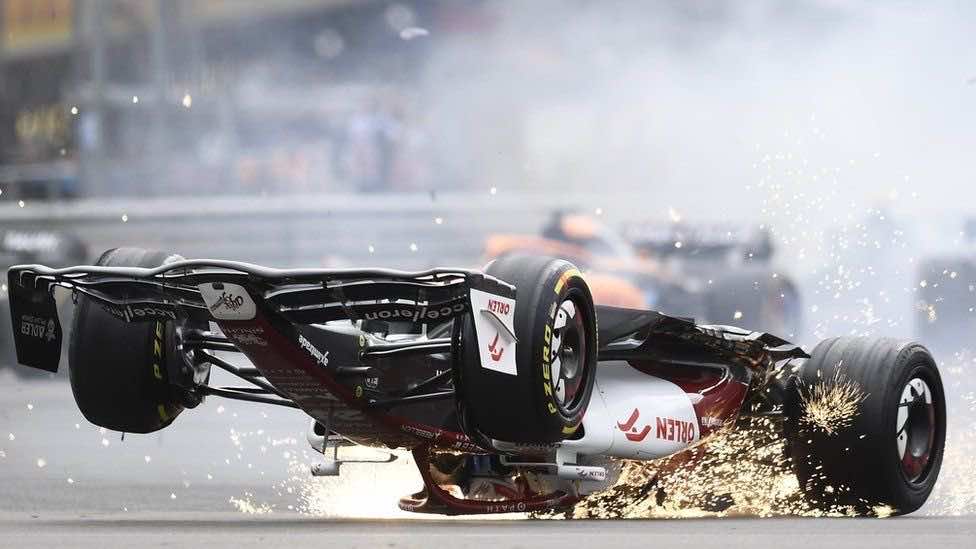Zhou Guanyu, the Alfa Romeo driver, was involved in a horrific incident on the first lap of Sunday’s British Grand Prix.
The car of the 23-year-old Chinese F1 driver went over on the first corner and spun away from the racetrack, colliding with a tyre barrier and then a fence right in front of spectators.
Fortunately, medics at Silverstone gave Zhou the all-clear. “He’s talking, there are no fractures, and considering the circumstances, he’s OK,” his teammate Valtteri Bottas was told over the team radio.
Zhou tweeted after the race: “I’m OK, all clear. Halo saved me today. Thanks, everyone, for your kind messages!”
According to the recordings, Yuki Tsunoda damaged George Russell’s rear-left tyre, causing the Mercedes driver to collide into Zhou, upending the Alfa Romeo. The event also looked to have crushed Zhou’s protective roll hoop, although the halo remained intact.
Zhou Guanyu’s crash during the British Grand Prix was a terrifying experience for everyone watching. The halo probably saved his life, but what exactly is the Halo in Formula One?
If the crash had happened five years earlier, Zhou would have been head first on the track before flying into the barriers after clearing the tyre wall through the air.
So, if you’re new to F1, you might not know what halo is or what part it plays in the sport.
The Halo was first adopted in 2018 as a necessity for all cars for driver safety. It curves around the cockpit to protect the driver’s head if they end up upside down as Zhou did, or when they are about to be hit by an airborne object such as a displaced tire.
It is made of aerospace industry Grade 5 titanium and can bear the weight of a double-decker London bus (12,000kg). It’s the car’s strongest component, although it’s only seven kilos.
Since it drastically decreased visibility in the cockpit, it was met with many controversies; nonetheless, most people who were initially against it now embrace the Halo.
Drivers in Formula One take significant risks every time they race, making it a hazardous sport.
However, it is wonderful to see such advancements in safety thrive, and long may they continue.
When Zhou was found safe, the British Grand Prix, former FIA president Jean Todt also applauded the Halo. “Glad I followed my convictions in imposing the Halo, despite a strong opposition,” he wrote on Twitter.

